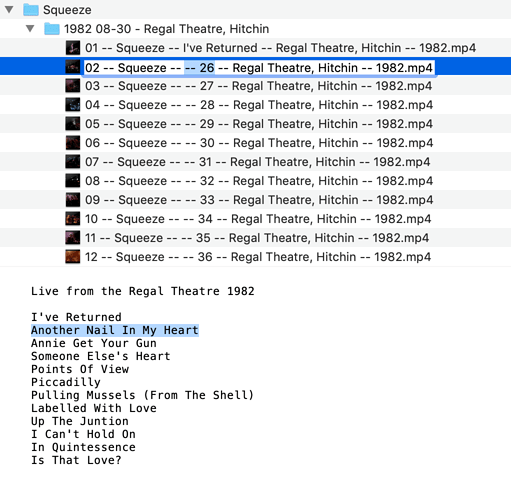
- #FILEBOT SEQUENCE INSTALL#
- #FILEBOT SEQUENCE MANUAL#
- #FILEBOT SEQUENCE SOFTWARE#
- #FILEBOT SEQUENCE DOWNLOAD#
All you need to do is crawl web sites to build "indexes of fingerprints",Īnd well, match them to the https traffic. Or at least, I was able to do just that within aįew tries. To the list of pages visited by an user? Mind me: I'm talking about pages here - URLs, actual content.
#FILEBOT SEQUENCE DOWNLOAD#
For example: a large long download from, is,īut how easy is it to go from a traffic dump, captured with something like tcpdump I have always heard that it was possible to guess the content of "HTTPS" requestsīased on traffic patterns. Systemic changes like the introduction of systemd or similar. Worst can happen with C libraries or different GCC versions using different ABIs, or But this is hard to do, and error prone at times. This is generally handledĬorrectly by apt-get dependencies, assuming the maintainer did a really good job Them will either need to be upgraded, or their icons break. Now, in the new icons package, some old icons have been removed. ThisĬool and new application depends on the latest icons, which apt also correctly installs.
#FILEBOT SEQUENCE INSTALL#
Why is this a problem? Well, it all has toĭo with dependencies, backward compatibility and the fact that they may not alwaysįor example: let's say you install a cool new gnome application from unstable.
#FILEBOT SEQUENCE MANUAL#
Packages by defautl, but allow you to do a manual override to install from "testing"īefore starting, it's worth noting that this might not be for the faint of hearts: mixing and matching debian releases For example, you can configure apt-get to install "stable" Release of Debian, which might not be the right version for you.Īlso, people don't often realize that it's easy to use more than one "release" Or well, "true" if you stick to the "stable" Will raise is the fact that it only has "old packages", it is not updated When talking about using Debian, one of the first objections people Something it was not quite designed to do: persistent development environments.īefore attacking me violently for committing such a horrible sin, Over the last year, however, I learned to love to use docker for Hermetic environment for your build or test system to run on, withĪ new container instantiated for each run of your build or test, deleted It's what you do when you compose one or more containers to create an It's what you do when you use a plain Dockerfile to package an applicationĪnd all its dependencies into a container at build or release time, forĮxample, to then instantiate (and delete) that container on your production machines (kubernetes?). To then be deleted as soon as the work is done or the application needs

To mind are disposable containers: containers that are instantiatedĪs many times as necessary to run an application or to complete some work, When thiking about Docker and what it is designed to do, what comes What you're up to before going around touching the wiring. So that your incredibly cheap and naive SATA controller and linux system knows Linux kernel, fairly easy to do, and worked really well for me.Īll you need to do is to make sure you type a few more commands from your shell, Not for the faint of hearts, but turns out this is possible with a stock No hardware raid controller, just the cheapest SATA support offered by the cheapestĪtom motherboard that you bought 10 years ago that happened to have enough In use, read write without unmounting it, and without rebooting the machine).Īll of this with consumer hardware, that DOES NOT SUPPORT ANY SORT OF HOT SWAP. The size of the raid5 volume and, well, you want to do it live (with the partition
#FILEBOT SEQUENCE SOFTWARE#


 0 kommentar(er)
0 kommentar(er)
